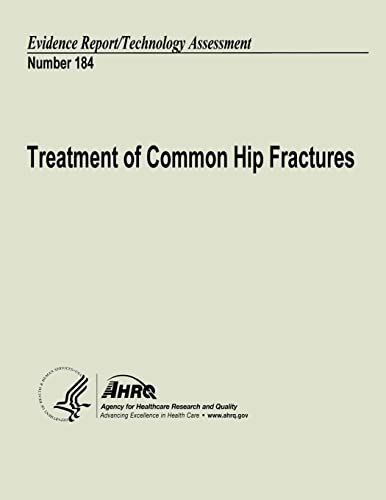Reseña del editor:
Hip fractures rank in the top ten of all impairments worldwide in terms of loss in disability-adjusted years for people 50+ years old. The absolute number of hip fracture hospitalizations in the United States is currently about 310,000, and this number is expected to continue to rise due to increased life spans and an aging baby boom generation. Ninety percent of hip fractures result from a simple fall; therefore, efforts to prevent hip fractures are unlikely to have a substantial impact on hip fracture incidence. The consequences for hip fractures in elderly individuals are significant in terms of lives lost and the associated negative impacts on hip fracture patients’ functioning and quality of life. One year mortality for patients after a hip fracture is approximately 20 percent, with men, patients older than 75 years, and nursing home patients at higher risk. However, it is not clear how much of that mortality is due to the fracture and its sequelae and how much to the underlying frailty that may predispose a person to a fracture. Morbidity associated with hip fractures may include serious complications, such as deep vein thrombosis and postoperative infection, muscular deconditioning, pain, and loss of mobility. Among patients who were living independently prior to a hip fracture, only about half are able to walk unaided after fracture, and about one-fifth require long-term placement in a care facility. Hip fractures are generally classified into three major types, depending on the specific location of the fracture: femoral neck, intertrochanteric, and subtrochanteric fractures. The term pertrochanteric hip fracture may also be used in hip fracture literature and refers to a more inclusive set of extracapsular fractures, including intertrochanteric, subtrochanteric, and mixed fracture patterns. The vast majority of hip fracture patients are treated with surgical repair. The short-term goal of surgical treatment is to stabilize the hip fracture enough to withstand early mobilization and weight bearing, which prevents complications due to prolonged bed rest and aids in fracture healing. The type of surgery is generally based on the fracture pattern and patient characteristics. Pertrochanteric fractures are generally managed with internal fixation, most often plate/screw devices or intramedullary nails. Femoral neck fractures are treated with either internal fixation or arthroplasty. Hemiarthroplasty replaces the femoral head segment of the upper femur with an artificial implant. The patient’s own acetabulum is not replaced. Total hip arthroplasty is the prosthetic replacement of the entire hip joint, both the femoral head and the acetabulum within the pelvis. The goal of treatment for hip fractures is to return patients to their pre-fracture level of function. There is a growing body of literature on treatment options and their effects on intermediary and patient post-surgical treatment outcomes, including several systematic reviews; however, no comprehensive organization of the evidence across all types of geriatric hip fractures currently exists. The aim of the present project was to conduct a systematic review and synthesize the evidence of the effects of surgical treatments of fractures of the hip on patient post-treatment outcomes, which to date have received only modest attention, but which are central to the patient’s experience. This review was asked to address the following key questions: Key Question 1 – What is the relationship between patient variables, the type of fracture and patient post-treatment outcomes, such as pain and functioning? Key Question 2 – What is the relationship between the type of fracture and patient posttreatment outcomes? Key Question 3 – What is the relationship between implant variables and patient posttreatment outcomes? Key Question 4 – What is the relationship between the type of intervention and patient post-treatment outcomes?
„Über diesen Titel“ kann sich auf eine andere Ausgabe dieses Titels beziehen.


